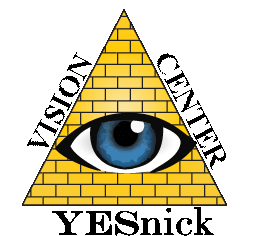
 In a normal eye, light comes in through the cornea. The cornea then bends
In a normal eye, light comes in through the cornea. The cornea then bendsthe light to send it through the pupil and the iris regulates the amount
of light that gets through. The light then travels through the lens before
it hits the retina. Refractive errors affect this trajectory so light
does not hit the retina properly. Someone with a refractive error usually must wear
glasses or contacts in order to see properly. Keep reading to learn more about
these errors:
Myopia
Myopia, or nearsightedness, is a common refractive error. This condition
occurs if the eyeball is too long or if the cornea curves too much. When
someone is nearsighted, they can see close objects but have difficulty
focusing on objects that are far away. Because of the unusual shape of
the eye or the cornea, light focuses in front of the retina instead of
on the retina. If you have trouble seeing far away, you should visit your
eye doctor in Las Vegas for an eye exam to tell you if you are nearsighted.
Hyperopia
Hyperopia,
or farsightedness, is a refractive error that occurs when the eyeball is too short or the
cornea does not curve enough. People with hyperopia can see objects that
are far away much clearer than objects that are close by. Sometimes hyperopia
is so slight that a person does not realize they have a refractive error.
If the farsightedness is very severe, your eye doctor can prescribe eyeglasses
or contact lenses to correct the problem.
Astigmatism
Another common refractive error is called astigmatism, which occurs when
the light does not hit the retina evenly. This results in blurry vision
for objects that are close by and far away. If you have astigmatism, it
is important to get an eye exam so you can get a prescription to correct
your vision.
Presbyopia
The lens actually changes shape in healthy eyes to properly send light
toward the retina. As the eyes age, though, they might not be able to
bend as well, which could result in a condition called presbyopia that
causes blurry vision.


